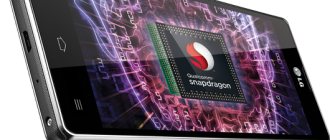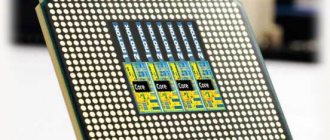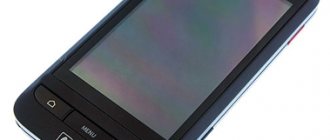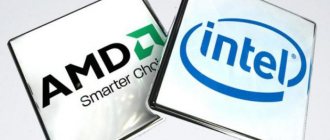Why are eight smartphone processor cores better than four?
What are the differences between quad-core and octa-core smartphone processors? The explanation is quite simple. Eight-core chips have twice as many processor cores as quad-core chips. At first glance, an eight-core processor seems twice as powerful, right? In reality, nothing like that happens. To understand why an eight-core processor does not double the performance of a smartphone, some explanation is required. The future of smartphone processors is now. Eight-core processors, which only recently could only be dreamed of, are becoming increasingly widespread. But it turns out that their task is not to increase the performance of the device.
These explanations were published by Jon Mundy in the article "Octa-core vs Quad-core: Does it make a difference?" on the pages of the Trusted Reviews resource.
Quad- and eight-core processors. Performance
The terms "octa-core" and "quad-core" themselves reflect the number of CPU cores.
But the key difference between these two types of processors—at least as of 2015—is the way the processor cores are installed.
With a quad-core processor, all cores can work simultaneously to enable fast and flexible multitasking, smoother 3D gaming, faster camera performance, and more.
Modern eight-core chips, in turn, simply consist of two quad-core processors that distribute different tasks among themselves depending on their type. Most often, an eight-core chip contains a set of four cores with a lower clock speed than the second set. When a complex task needs to be completed, the faster processor naturally takes on it.
A more accurate term than "octa-core" would be "dual quad-core." But it doesn't sound so nice and isn't suitable for marketing purposes. That's why these processors are called eight-core.
Why do we need two sets of processor cores?
What is the reason for combining two sets of processor cores, passing tasks to one another, in one device? To ensure energy efficiency.
A more powerful CPU consumes more power and the battery needs to be charged more often. And batteries are a much weaker link in a smartphone than processors. As a result, the more powerful the smartphone processor, the more capacious battery it needs.
However, for most smartphone tasks you will not need such high computing performance as a modern processor can provide. Navigating between home screens, checking messages, and even web navigation are less processor-intensive tasks.
But HD video, games and working with photos are such tasks. Therefore, eight-core processors are quite practical, although this solution can hardly be called elegant. A weaker processor handles less resource-intensive tasks. More powerful - more resource-intensive. As a result, overall power consumption is reduced compared to the situation when only a processor with a high clock frequency would handle all tasks. Thus, the dual processor primarily solves the problem of increasing energy efficiency, rather than performance.
Technological features
All modern eight-core processors are based on the ARM architecture, the so-called big.LITTLE.
This eight-core big.LITTLE architecture was announced in October 2011 and allowed four low-performance Cortex-A7 cores to work in conjunction with four high-performance Cortex-A15 cores. ARM has repeated this approach every year since, offering more capable chips for both sets of processor cores on the eight-core chip.
Some of the major mobile device chip makers are focusing their efforts on this big.LITTLE "octa-core" example. One of the first and most notable was Samsung's own chip, the famous Exynos. Its eight-core model has been used since the Samsung Galaxy S4, in at least some versions of the company's devices.
More recently, Qualcomm also began using big.LITTLE in its eight-core Snapdragon 810 CPU chips. It is on this processor that such well-known new products in the smartphone market as the HTC One M9 and G Flex 2, which has become a great achievement for LG, are based.
At the beginning of 2015, NVIDIA introduced the Tegra X1, a new super-powerful mobile processor that the company intends for automotive computers. The X1's main feature is its console-challenging GPU, which is also based on the big.LITTLE architecture. That is, it will also become eight-core.
Is there a big difference for the average user?
Is there a big difference between a quad-core and an eight-core smartphone processor for the average user? No, in fact it is very small, says Jon Mandi.
The term "octa-core" is somewhat confusing, but it actually means duplication of quad-core processors. The result is two independently operating quad-core sets, combined into one chip to improve energy efficiency.
Is an eight-core processor needed in every modern smartphone? There is no such need, believes Jon Mundy and cites the example of Apple, which ensures decent energy efficiency of its iPhones with only a dual-core processor.
Thus, the eight-core ARM big.LITTLE architecture is one of the possible solutions to one of the most important issues regarding smartphones - battery life. According to John Mundy, as soon as another solution to this problem is found, the trend of installing two quad-core sets in one chip will stop, and such solutions will go out of fashion.
Do you know other advantages of octa-core smartphone processors?
Source
Processor comparison
We have compiled all the basic characteristics that are important for the user into a table that will help you choose the right option. This includes the most common chips from well-known manufacturers over the past 2-3 years, which have not yet lost their relevance.
| Model | GPU | Cores | Frequency (GHz) | Process technology (nm) | release date |
| Snapdragon 835 | Adreno 540 | ||||
| Snapdragon 821 | Adreno 530 | ||||
| Snapdragon 820 | Adreno 530 | ||||
| Snapdragon 810 | Adreno 430 | ||||
| Snapdragon 808 | Adreno 418 | ||||
| Snapdragon 650 | Adreno 510 | ||||
| Snapdragon 625 | Adreno 506 | ||||
| Snapdragon 430 | Adreno 505 | ||||
| MT6797T Helio X25 | Mali-T880 MP4 | 1,55+2+2,5 | |||
| MT6797 Helio X20 | Mali-T880 MP4 | 1,4+1,8+21 | |||
| MT6757 Pro/Helio P25 | Mali T880 MP2 | ||||
| MT6755(M)/Helio P10 | Mali T860 MP2 | ||||
| MT6738(T) | Mali T860 MP2 | ||||
| Kirin 960 | Mali-G71 MP8 | ||||
| Kirin 955 | Mali-T880 MP4 | ||||
| Kirin 935 | Mali-T628 MP4 | ||||
| Exynos 8895 | Mail-G71 MP20 | ||||
| Exynos 8890 | Mali T880MP12 | ||||
| Exynos 7880 | Mali-T830 MP3 | ||||
| Exynos 7870 | Mali-T830 MP3 | ||||
| Exynos 7580 | Mali-T720 MP2 |
Another convenient way to compare mobile processors is their performance graphs. In the figure below you see the top devices from the Antutu benchmark as of the end of 2016 and beginning of 2017.
So
, when choosing a mobile processor, first of all, we pay attention to the manufacturer (we listed the most reliable ones above), the clock frequency of the productive cores, and the presence of heating. Everything else is technical subtleties that there is no point in delving into for the average user (and if you are not an average user, you have not learned anything new from this text). It is enough to be guided by a simple rule: the flagship models here collect all the best, there are no problems with them (with rare exceptions), they are needed, first of all, by gamers and enthusiasts. For example, Google Daydream is only compatible with advanced processors. Modern “average” devices also cope with applications and games, including three-dimensional ones, without any problems. As for the entry-level, you will have to make compromises, but it is much better if it is a low-power but reliable chipset from a renowned manufacturer than a homemade noname from which you can expect anything.
Gone are the days when most owners of mobile gadgets were aware of what the phrase MediaTek was. But even the cohort that was still called about this processor - the associations were not very cheerful, and were mainly related to the “glitches” of the system.
But, after a couple of years, the Chinese manufacturer still decided to produce processors that, in terms of their functionality, became a completely competitive category in the mobile chip market. In turn, such a “technological” leap provoked serious interest from many mobile device manufacturers.
At the same time, the American Qualcomm did not sit idle. To begin with, it pushed Texas Instruments out of the domestic market. And now, Qualcomm and MediaTek are the flagships of the mobile chip market for various smartphones. But which company is better? We'll find out in our article.
What is the difference between mobile and desktop processors?
Without going into numerous technical features, the main difference can be called architecture.
Architecture is a set of design principles, a general layout of elements on a chip, and a diagram of software interaction with a chip.
Desktop models use x86/x64 architecture, but engineers have not been able to achieve the required energy efficiency, despite all attempts. The processors consumed too much power due to the need for additional conversions, and were therefore not suitable for mobile technology. As a result, the developers proposed using the new RISC (reduced instruction set computer) architecture instead of the existing CISC (complex instruction set computing).
In CISC architecture, each instruction has its own format and length, which requires the processor to process more time and resources. In RISC architecture, instructions not only have an overall length, but also a format. Thanks to this, RISC processors are more energy efficient, process instructions faster and require less RAM, making them an almost ideal candidate for mobile electronics.
The development of RISC was undertaken by ARM Limited, which introduced an improved architecture called ARM. It is worth noting that this company not only creates its own variations of processors, but also provides licenses for its developments. As a result, based on the cores provided by ARM, large brands create proprietary topologies and proprietary processors, which we will talk about later.
Apple
Apple began developing processors with its own topology only in 2010, when it presented its first iPad. The A4 processor model is built on the ARM Cortex-A8 core and became the beginning of the entire line, which continues to this day. By the way, in the first generation smartphones before the iPhone 4, Apple used microprocessors from Samsung.
Since 2010, Apple has released more than 15 models in the line, each subsequent one being an improvement on the previous one and, as a rule, installed in a new iPhone or iPad model.
| Model | Number of transistors | Number of cores | Technical process | Devices |
| A4 | ? | 1 | 45 nm | iPadi, Phone 4, iPod touch 4G |
| A5 | ? | 2 | 45 and 32 nm | iPad 2, iPhone 4S, iPod Touch 5G, iPad Mini. |
| A5X | ? | 2 | 45 nm | iPad 3 |
| A6 | ? | 2 | 32 nm | iPhone 5, iPhone 5c |
| A6X | ? | 2 | 32 nm | iPad 4 generation |
| A7 | ≈ 1 billion | 2 | 28 nm | iPhone 5S, iPad Air, iPad mini, iPad mini 3 |
| A8 | ≈ 2 billion | 2 | 20 nm | iPhone 6 and 6 Plus, iPod touch 6G, iPad mini 4, HomePod |
| A8X | ≈ 3 billion | 3 | 20 nm | iPad Air 2 |
| A9 | ≈ 2 billion | 2 | 14 and 16 nm | iPhone 6S and 6S Plus, iPhone SE, iPad 5 |
| A9X | ? | 2 | 16 nm | iPad Pro |
| A10 | 3.28 billion | 4 | 16 nm | iPhone 7 (Plus), iPad 6, iPad 7, iPod Touch 7 |
| A10X | ≈ 4 billion | 6 | 10 nm | iPad Pro (10.5; 12.9) |
| A11 | 4.3 billion | 6 | 10 nm | iPhone 8 (Plus), iPhone X |
| A12 | 6.9 billion | 6 | 7 nm | iPhone XS, iPhone XS Max, iPhone XR |
| A12X | ≈ 10 billion | 8 | 7 nm | iPad Pro (2018) |
| A12Z | ≈ 10 billion | 8 | 7 nm | iPad Pro (2020) |
| A13 | 8.5 billion | 6 | 7 nm | iPhone 11 (all), iPhone SE 2, iPad 9th Gen. |
| A14 | 11.8 billion | 6 | 5 nm | iPad Air (4th Gen), iPhone 12 (all) |
| A15 | 13 billion | 6 | 5 nm | iPad mini (6th Gen). iPhone 13 (all) |
Apple was one of the first to understand all the advantages of RISC architecture in the mobile segment. Paired with an OS of their own design, engineers were able to produce some of the most powerful models, which were 50–100% faster in performance than top products from other brands.
On average, with each new generation of processors, Apple managed to increase performance from 1.3 to 2 times.
Moreover, in certain tests, A-series processors are not inferior in performance to desktop models, showing similar or even better results. The most powerful breakthrough can be called the Apple M1 - this is a system-on-chip ARM architecture, which is used not only in the iPad Pro, but also in the latest MacBooks.
PowerVR accelerators were responsible for graphics in mobile processors up to A11, and starting with A11, Apple engineers installed their own GPU, but using licensed software.
Without exaggeration, Apple can be called one of the leaders in the field of mobile processors. Many years of experience and matching the hardware to the operating system allow us to obtain the highest results. However, Apple processors are installed exclusively in equipment from this brand.
Qualcomm
The Cupertino team competes with engineers from Qualcomm, one of the largest companies in the development and research of wireless communications and systems on a chip. In particular, the company is known for its Snapdragon line of processors. The company began production of the first SoCs in 2007, providing processors for HTC, Acer, Asus, LG, Huawei and other brands. Between 2007 and 2012, four generations of models S1–S4 were created using a 28 nm and larger process technology.
In generations before S4, the architecture was developed based on its own cores, which are modified versions of ARM-Cortex.
Since 2013, the company has introduced five main lines of its processors, aimed at different classes of devices:
Source
Processor manufacturers
What are the best processors for smartphones? There is no clear answer to this question. It is worth noting one of the leaders in the production of microchips. This is the Qualcomm company, which developed such bestsellers as Snapdragon 400, 600 and 800. Apple Corporation designs processors independently for its devices using ARM architecture. The Korean brand Samsung has also developed Samsung Exynos microchips, which are installed on the company's TOP smartphones. The Chinese company MediaTek, which is confidently mastering the modern market, is also worthy of special attention. It is worth mentioning the Intel brand, which produces processors based on the x86 architecture, used for the development of computer microchips. The products of this manufacturer are mainly used in Windows devices.
Is the number of cores in a smartphone processor important?
What to look for when choosing a processor in a smartphone?
Many smartphone buyers strive to choose a productive device that performs well in terms of multitasking or running modern games. Future users often pay attention to the frequency of processor cores. This indicator is indicated in the characteristics of each device and is actively advertised by manufacturers. However, studies claim that the excess number of cores has little impact on everyday use. In most cases, this is a marketing ploy that attracts potential buyers.
Recently, processors with 4 and 8 cores have gained significant popularity. The difference between them is small. The secret is that 8-core chipsets consist of two 4-core processors that distribute various tasks among themselves. During simple actions (for example, opening the system menu or launching the camera), the processor operates at a low clock speed. For demanding tasks (running games and programs), the computing resources of a more powerful processor are used.
The question arises: why do we need a second cluster of cores if we can get by with one? Firstly, such a solution attracts potential buyers and serves as a good marketing ploy. Secondly, two processors sometimes increase battery life by redistributing loads.
How does a processor core work?
Each core inside the processor is a collection of microscopic transistors located on a silicon chip. The main job of transistors is to switch the supplied electrical energy. If energy is supplied, the transistor is in the open state. In the absence or shortage of supplied energy - in a closed state.
In the human understanding, the transistor is in the “On” or “Off” state, while in the processor’s understanding it is 1 or 0, respectively, which fits into the binary number system. Therefore, to access the processor, commands are encoded from the decimal number system to the binary system, and when the result is obtained, decoding occurs in the reverse order.
Accordingly, the computing power and speed of the processor core is affected by the number of transistors in the block. An important role is also played by the “bus width” for data transfer, as well as cache memory for storing frequently used instructions and other data.
Choosing the optimal processor for a smartphone
When choosing a smartphone with a powerful processor, you don’t need to be guided only by the number of cores. There are more important characteristics, for example, a graphics accelerator. Many manufacturers equip expensive phone models with an additional chip responsible for processing 3D graphics. There is a wide variety of 3D accelerators manufactured under the Adreno and Mali brands. Most chipsets are not designed for heavy games, so you need to clarify this point in advance.
The second important indicator is heating. Excessive heat generated by the processor can cause yellow spots to appear on the surface of the screen matrix. Heat also has a negative effect on the processor chip. To avoid this, the processor lowers the frequency. This feature is called throttling. In other words, the hotter the smartphone, the slower it will work. It is recommended to pay attention to the test results before purchasing, and also choose devices with a heat-conducting casing.
The third factor in productivity is optimization. It is achieved due to a combination of several factors. For example, the amount of RAM is inextricably linked to the processor. Even powerful chipsets with a small amount of RAM are not able to fully demonstrate their functionality. Today, the optimal size of RAM is 4-6 GB. It is strongly not recommended to purchase smartphones with RAM less than 2 GB. There is not much point yet in gadgets with 8 and 10 GB of RAM - they are usually useless and brought to market only thanks to marketing.
The fourth indicator is benchmarks. Each mobile processor undergoes synthetic testing in special programs to determine computing power. It is usually measured in AnTuTu points. The higher the device score, the better the result the user will notice when launching games or demanding applications. However, it is not recommended to focus only on numbers - some manufacturers manipulate test results through specially “trained” smartphones.
Finally, the fifth selection criterion is the processor manufacturer. Today, Snapdragon from Qualcomm firmly holds the lead in the market (here is the latest current rating). They produce chipsets of different price segments of excellent quality. Exynos processors created by Samsung are also very popular. They are found only in devices from the South Korean manufacturer. Among budget models, chips from MediaTek are widely known; they are significantly inferior to Snapdragon in terms of performance parameters, but cost much less than their competitors.
Throttling
Typically, throttling means excessive heating of the processor, after which it reduces the frequency and noticeably loses performance. This is a protection mechanism designed to preserve the integrity of the CPU in a critical situation. Why does “bad throttling” happen?
“If the heat removal system is not thought out, gigahertz will not help”
For example, due to the desire of the processor core, without providing effective cooling and/or without optimizing software and other hardware components. Or to score higher in tests by advertising your phone as "the most powerful." And also because of the desire of vendors to walk the line, maintaining maximum performance for a long time. By and large, throttling in smartphones is inevitable, but it can be managed, and the harder it is for the processor to reach the boiling point, the more efficient it is.
In the specifications for the mobile phone, you can declare a frequency of 2.5 GHz for all eight cores, in synthetic tests. In reality, the smartphone will not cope with games or heavy applications: for the first couple of minutes everything will be fine, then strong heating will follow due to the CPU’s attempts to squeeze out the conditional 2.5 GHz, “freezes” and “brakes” will appear, the device will be unpleasant hot and will become useless - if the heat removal system is not thought out and the software works poorly.
Source
Results
When choosing a smartphone with a powerful processor, pay attention to a whole range of different factors - the number of cores, manufacturer, optimization and benchmark results. Also pay attention to the material from which the mobile device case is made. Aluminum or ceramic housings with good thermal conductivity are suitable. It is better not to consider glass options, since in most cases the user is faced with excessive heating.
A more detailed article about the most important characteristics of smartphones is available at this link. Recommended reading.
Source
Double the benefits of 8- and 10-core smartphone processors
The processor of a modern smartphone sometimes has more cores than the processor of a desktop computer. Does this mean that the performance of such a smartphone is higher than that of a computer? Does a smartphone processor need 8 or even 10 cores? There is a point of view that the processor does not need so many cores. A feature of phone processors is that not all of its cores have the same clock speed. For example, all cylinders in a car engine have the same capacity. And this completely changes everything. Octa-core processors such as the Qualcomm 615, Qualcomm 810, and Samsung Exynos 7420 have two different sets of cores.
Four cores are high-performance, and four more consume less energy. When you need to perform everyday tasks like checking email, there is no need for high processor performance. Gary Sims, in his article “Why 8 and 10 CPU cores in smartphones are a good idea – a lesson from the kitchen,” explains why this approach makes sense, and also introduces readers to the engineering and marketing reasons why which are transitioning to the production of 8- and 10-core processors, despite the fact that they do not increase the performance of a smart phone.
If there are two sets of cores, Android turns to those that will most effectively cope with the task. Network connections are characterized by a lot of downtime and waiting time compared to the actual execution of tasks. And if you start playing the game, then you will need high-performance cores.
Technical benefit
This approach to task distribution is known as “heterogeneous computing”. In this case, not all kernels are the same. For this approach to work, the operating system scheduler needs to understand that kernels have different characteristics and assign tasks to the kernels based on those characteristics.
ARM's heterogeneous computing model is called big.LITTLE. The 8 cores of the big.LITTLE set are divided into two clusters. One cluster contains four Cortex-A57 or Cortex-A72 cores. These powerful cores have high computing power. The second cluster consists of Cortex-A53 cores, which are also 64-bit, quite efficient, but more energy efficient since they are characterized by a lower clock frequency. Chip makers are not limited to the 4+4 model. They can create other configurations, for example 2+4 (dual-core Cortex-A57 and quad-core A53), as in the Snapdragon 808.
It’s the same in the kitchen - in the process of cooking, the dishes and tools that best cope with the task are used. There is no need to fry in a pan if you have a frying pan.
In smartphones, increasing the number of processor cores is not intended to increase the overall performance of the device, as in desktop computers. If a computer processor has 8 cores, then it is more productive than a quad-core one. And the increased number of smartphone cores increases the energy efficiency of the device.
Talking about the MediaTek X20, this 10-core processor is designed to improve power consumption by 30% compared to the reviewed dual-cluster design. The processor has two cores with high performance, four with average performance, and four more with low power consumption. This processor allows you to achieve significant reductions in power consumption for simple tasks such as loading web pages, watching videos or using Facebook.
In fact, a smartphone cannot use more than three cores in a single scenario, notes Forbes columnist Patrick Moorhead. The only question is, which cores does the operating system use? If all kernels were the same, the operating system would have no choice.
Source
Multi-core, clock speed
All relevant smartphone manufacturers today use solutions with multi-core processors. Multi-core allows you to utilize resources more efficiently.
“Multi-core is a plus and a minus at the same time”
It becomes possible to simultaneously perform several tasks (running applications in the background). In addition, one CPU usually contains both less productive cores and more productive ones with different clock frequencies. In an eight-core processor, these can be “sets” of 4+4, 4+3+1, or others, depending on the processor manufacturer and customer requirements.
Need to type an SMS or look at your to-do list? “Weak” cores with low frequencies are used, the load on the battery is minimal. Have you started the game? The “strong” cores turned on, and the battery began to lose charge more actively. In real life, this means that the same smartphone in the hands of a mobile gamer or someone who likes to shoot 4K video will last about five hours, while in the hands of someone who prefers only calls and SMS, it will last two days.
Multi-core is a plus and a minus at the same time. The presence of different tools (cores) allows you to make your smartphone universal for different tasks. But at the same time, you need to teach them to work correctly with all applications, and this is not always possible. Which results in problems, for example, with performance (the system does not understand that it needs to enable productive cores, and everything is “stupid”) or energy leakage (everything works at maximum, even smoke comes out when it is not needed).
Learning Android. Kernel - what is it.
Many owners of Android devices on various forums and websites often come across mention of something incomprehensible, which is called the kernel, or in English kernel. It can be changed and it is mentioned in the device settings menu, in the “About tablet (phone)” section.
If you dig deeper, you will find that the kernel is part of the operating system, and not only Android has it, but also other operating systems: Windows, iOS, MacOS and others. But we will be interested in the Android kernel, and I will try to explain what it is at the level of novice users.
You probably know that any operating system, including Android, is, by and large, a set of programs that manage the operation of the entire device and are responsible for launching user applications such as games, file managers, web browsers and others.
And the Android kernel is practically the most important part of the operating system, which is responsible for the interaction between all the hardware and the software part of the system. The kernel consists of a set of drivers for all the equipment in the device and a subsystem for managing memory, networking, security, and other basic functions of the operating system. For example, when you touch the screen to launch an application, the screen touchpad driver determines the location where the touch occurred and reports the coordinates to other programs, which, again using the kernel, will find the desired application in the device memory and launch it. This is, of course, a very simplified model, but it reflects the essence of the operating system.
Thus, we found out that when any software needs the hardware of a tablet or phone to do something, it turns to the operating system kernel to do it.
The kernel controls absolutely all equipment: Wi-Fi, Bluetooth, GPS, memory and other devices. The “heart” of the device – its processor – is no exception. The core can control its frequency and power supply. The core of the Android operating system was borrowed by its developers, Google, from the Linux operating system.
Since the kernel controls all the hardware, and the hardware of all tablets and phones is different, the basic Android kernel is modified by the manufacturer for each device separately.
Like firmware, kernels can be stock (factory) and custom - alternative, created by independent developers.
Why do we need custom kernels? The stock core is maximally optimized by the manufacturer for a specific device, but it usually blocks such important core functions as, for example, controlling the processor frequency. And if you need to overclock the processor of your tablet, you will need to change the kernel to a custom one, in which the processor frequency control function is unlocked.
In addition, custom kernels are usually based on more recent versions of Linux kernels. Here is an approximate list of features that custom kernels give us:
Since alternative kernels are created by independent developers, there is no guarantee that your tablet or phone will work without problems after installing a custom kernel. Therefore, before flashing a new kernel, it is advisable to make a full backup of the system.
Related materials:
Firmware. What is it and why is it needed.
Batteries for tablets and phones. The three most common myths about their service life
Calibrate the battery of a tablet or smartphone without using any programs.
Learning Android. How to Clear Youtube Video Search History
Learning Android. How to clear application cache and reset them to their original state.
Learning Android. How to replace the on-screen keyboard. How to make a USB keyboard switch input languages.
How many cores are needed for the device to function effectively?
On the modern market there is a huge number of multi-core processors that use several computing units for different tasks. After the creation of dual-core microchips, four-, five- and eight-core solutions also began to appear on the market. When buying a mobile device, the choice may seem obvious, based on the principle - the more cores, the better. But it is not always the case. Smartphone processors almost never use all cores to launch and operate applications, for most of which a dual-core chip is sufficient. A clear indication of this is the latest version of the iPhone, which uses a dual-core processor. Correct and high-quality optimization allows the gadget to function at the highest level, and the performance of this device will be the envy of many devices, even with eight-core microchips.
It is worth paying attention to the Samsung Exynos 5 processor, which is equipped with some models of the brand’s gadgets. It has eight cores thanks to two quad-core microchips that do not function simultaneously. One of the processors is more powerful and starts when opening “heavy” games and applications. At the same time, he is quite “voracious”. The rest of the tasks are performed by a more energy-efficient chip, which conserves battery power and is capable of delivering excellent performance for less complex applications.
Don't know how to choose a good processor for your smartphone? When purchasing a budget device, a dual-core chip will be enough. If you are passionate about games, you should pay attention to quad-core variations. An eight-core processor is, of course, good, but there is practically no use for it yet. When it becomes possible to use such gadgets, modern premium smartphones will cost the same as budget models.
Some nanometers
“You will have a 7nm processor!” We are talking about the sizes of transistors from which the CPU is “assembled”. The lower the number, the better in theory. Once upon a time, 64-nanometer processors were installed in smartphones, now 7-nanometer processors are becoming mainstream, but there are also 8-nanometer, 10-nanometer and “larger” processors for cheaper and older smartphones.
Imagine that more small transistors could be installed in the same area, thereby increasing the overall processing power. In addition, they heat up less, which allows for even greater productivity.
For example, a 7-nanometer chip will be more productive than a 14-nanometer chip at the same voltage by a quarter, or the same performance at half the voltage (and the battery will run out later).
But there is a nuance associated with marketing (where would it be): manufacturers can use different methods for calculating nanometers and performance, so these figures are somewhat arbitrary, which is why direct comparison of the capabilities of processors from different companies is not always possible.
Custom kernel - what is it used for?
The Android operating system has many modifications, but there are not so many official firmwares. Imagine the situation - a bunch of manufacturers, different models with different technical characteristics. How does the kernel work in this situation? Will it be possible to simultaneously adapt to a budget phone and a flagship smartphone? Of course not.
That is why, individually customized modifications for specific devices, taking into account the features of the device - camera, screen size, battery capacity, etc.
Unfortunately, not all brands do this. In order not to waste time creating the optimal option, they simply trust the operation of the device to the stock (universal) kernel. The advantages of such a solution are obvious - budget savings. But there is a minus for users - some of the device’s capabilities are not used to the maximum (the processor frequency is limited, Android does not see the entire amount of RAM, the cool camera takes pictures worse than promised).
Fortunately, the above described happens extremely rarely and is typical for little-known brands. Self-respecting companies will never allow this to happen, because it will certainly affect their reputation and sales.
In addition, there are enthusiasts who independently “disassemble” the kernel, make adjustments to add useful features (processor overclocking, power management, etc.), then put everything back together and offer to download and install along with custom firmware for specific device model. If you decide to use alternative solutions, remember:
We have finished reviewing the topic “The core in the phone - what it does, how it works.” We hope that the article was useful.
Processor frequency: which is better for a smartphone?
When choosing a smartphone, you should not focus on clock speeds. But the higher the numbers, the better it is. Almost all processors for mobile phones have the ability to automatically adjust their own frequencies. Therefore, the characteristics of a smartphone or tablet indicate the upper figure. The bulk of smartphones have processors with the following ranges:
It is important to understand: megahertz on one device can “show themselves” faster than on another. The performance speed of a gadget is influenced not only by frequency, but also by many other parameters. To determine the speed of the processor, special programs have been developed that can be used to compare the performance of smartphones. Under any circumstances, it is better to choose a processor for a smartphone with a microchip with a frequency of at least 1500 MHz.
Source
Which phone to buy so that it is fast
After reading everything above, many may have a question about which phone or tablet to buy so that it is fast enough. Perhaps one of the readers is planning to change their phone and wants to know how much faster the new phone will be than the old one.
Testing the phone
A special test called Antutu Benchmark will help you determine how powerful your phone is. It checks the operating speed of each smartphone component and, based on the test results, gives the Android device a final score.
Just compare this score for different phones and find out which one is more powerful, and approximately how much more powerful. In addition to assessing the power of the phone, in the Antutu Benchmark application you can see detailed information about the device - processor model, graphics core model, screen resolution, installed sensors and much more.











